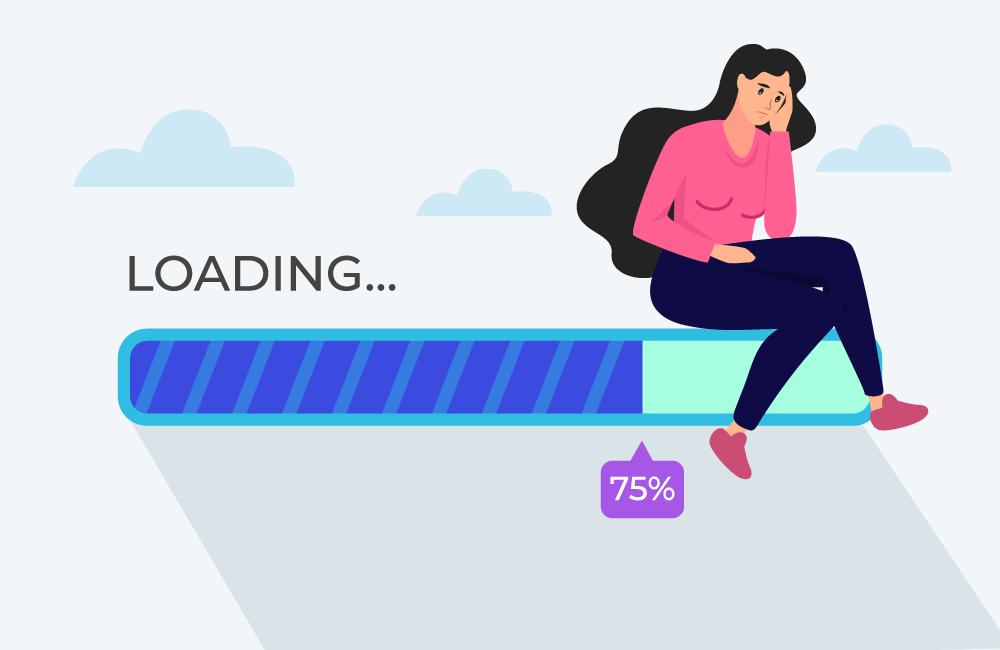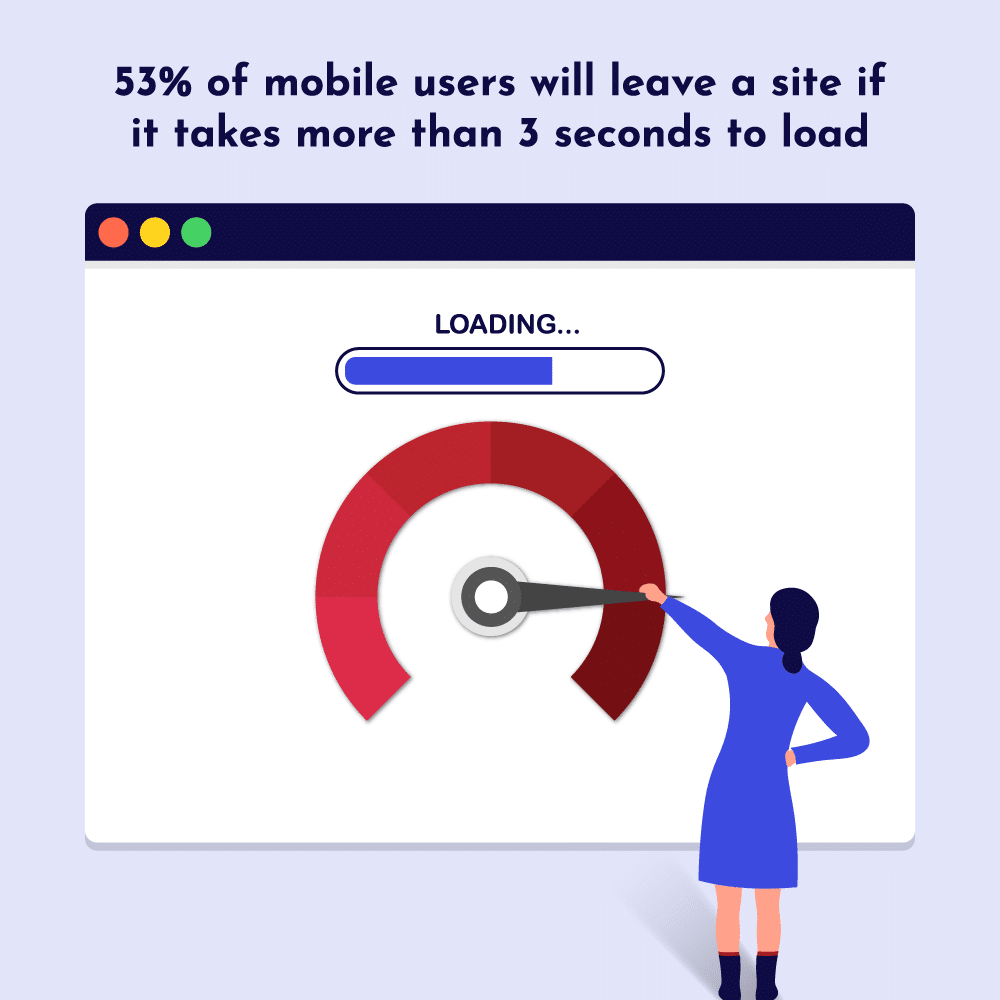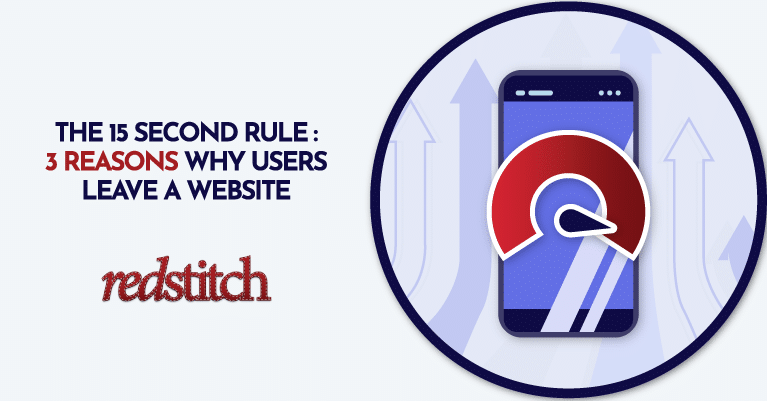In the age of endless options and instant gratification, businesses must create compelling digital experiences to survive in today’s competitive landscape. With the average user deciding within a mere 15 seconds whether to stay or leave a site, understanding the factors that influence their decision is vital for business owners, marketing professionals, and website administrators. This blog post will delve into the importance of website loading speed, common reasons why users leave a website within 15 seconds, and offer actionable tips to improve user experience and lead generation. By optimizing your website and aligning retention strategies with brand objectives, you can enhance engagement and increase customer acquisition. So, let’s dive in and explore the 15 second rule to ensure your website makes a lasting impression.
The Importance of Website Loading Speed

Website loading speed plays a crucial role in delivering a positive user experience. A fast-loading website ensures that visitors can access the information they seek quickly and seamlessly, contributing to their overall satisfaction. Moreover, website loading speed is a significant factor in search engine rankings, as Google and other search engines prioritize fast-loading sites in their search results. This means that having a speedy website not only enhances user experience but also improves visibility and organic traffic. Furthermore, website loading speed directly impacts conversion rates, as users are more likely to engage with and make purchases from websites that load quickly and efficiently. In summary, optimizing website loading speed is essential for retaining visitors, increasing search engine rankings, and driving conversions.
The 15 Second Rule: Common Reasons Why Users Leave a Website
Slow loading speeds are a significant factor contributing to users leaving a website within 15 seconds. Research indicates that a large percentage of mobile web users abandon pages if they don’t load within 10 seconds. Studies have shown that 53% of mobile users will leave a site if it takes more than 3 seconds to load, emphasizing the importance of optimizing loading speed.

Apart from slow loading speeds, poor website design and navigation also contribute to users leaving a website quickly. A website with a confusing layout, hard-to-read text, or an overwhelming amount of information can deter visitors from staying. Similarly, if users struggle to find what they’re looking for due to complicated navigation or unclear menus, they are more likely to abandon the site.
Another reason that users may leave a website within 15 seconds is irrelevant or low-quality content. If the information provided doesn’t meet the needs or expectations of the visitors, they are unlikely to stay and engage with the content. Ensuring that the content on your website is valuable, relevant, and well-organized can significantly improve user retention and overall experience.
Tips to Retain Visitors and Improve User Experience
One of the most effective ways to retain visitors and improve user experience is by optimizing website loading speed. Utilize website speed testing tools, such as Google PageSpeed Insights or GTmetrix, to identify areas of improvement and monitor your site’s performance. Implement image and file compression techniques to reduce load times and ensure a seamless browsing experience for users.
Another essential aspect of retaining visitors is enhancing the website design and navigation. Ensure your website employs responsive design for optimal viewing on mobile devices, as more users are accessing websites through smartphones and tablets. Additionally, refrain from cramming too many elements or images into the design – use clean and simple layouts that enhance rather than overwhelm. Adding search functionality is also beneficial in helping users find what they’re looking for quickly.
Lastly, focus on providing valuable and relevant content that addresses the needs and preferences of your target audience. Regularly update and refresh your content to keep visitors engaged and encourage them to explore your website further. By offering high-quality content that resonates with your audience, you increase the likelihood of users staying on your site longer and returning in the future.
Measuring User Retention and Engagement
After improving the website design, loading time, and content to retain users on your site longer, it’s essential to track user engagement and retention metrics. To measure these effectively, website administrators must track key performance indicators (KPIs) using analytics tools. Understanding the type of data being collected, such as the time users spend on the site, is important for informed decision-making.
Key Metrics for Tracking User Retention and Engagement
In the world of analytics, the time a user spent on your site is considered engagement data. This information provides insights into how visitors interact with the website and how long they stay. There are several key metrics to focus on when tracking user retention and engagement.
Bounce Rate
This metric represents the percentage of visitors who leave the website after viewing only one page. A high bounce rate indicates that users are not finding the content engaging or relevant, or that the website design is not user-friendly.
Average Session Duration
This metric measures the average amount of time users spend on the website during a single visit. A longer average session duration suggests that visitors are finding the content valuable and are more likely to engage with the site.
Pages Per Session
This metric reflects the average number of pages viewed by users during a single visit. A higher number of pages per session means that users are more engaged with the content and are likely to explore the website further. By monitoring these metrics, website administrators can identify areas that need improvement and implement changes to enhance user retention and engagement. Ultimately, this will lead to increased lead generation and customer acquisition.
Case Study: Successful Website Retention Strategies
Examining real-life examples of businesses that have successfully improved user retention and engagement can provide valuable insights and inspiration for implementing effective strategies on your own website. By analyzing the tactics these companies implemented, we can better understand the impact of website loading speed, design, and content on visitor retention and lead generation.
Zillow
One notable example is Zillow, a leading online real estate platform. Zillow recognized the importance of website loading speed in retaining visitors and took measures to optimize their site’s performance. By implementing image and file compression, as well as using website speed testing tools, Zillow was able to significantly improve loading times and user experience. As a result, the company experienced a decrease in bounce rate and an increase in visitor engagement, ultimately leading to higher lead generation and conversion rates.
Shopify
Another success story is that of the popular e-commerce platform, Shopify. Shopify focused on enhancing its website design and navigation to create a seamless and user-friendly experience. The platform adopted a responsive design for mobile devices, ensuring that users could easily navigate the site and access its features regardless of device type. Additionally, Shopify implemented intuitive navigation and clear calls-to-action, making it simple for users to find relevant products and complete transactions. These improvements contributed to a higher retention rate and increased sales conversions for the platform.
Moz
Lastly, the digital marketing blog, Moz, serves as an excellent example of a business that thrives by providing valuable and relevant content. Moz consistently publishes high-quality articles, case studies, and resources tailored to the needs and preferences of its target audience – digital marketing professionals. By regularly updating and refreshing its content, Moz has established itself as a trusted authority in the industry, leading to increased visitor retention, engagement, and ultimately, new customer acquisitions.
These case studies demonstrate the importance of prioritizing website loading speed, design, and content to retain visitors and improve overall user experience. By learning from these successful businesses and implementing similar strategies, you can enhance your website’s performance and achieve better results in lead generation and customer acquisition.
Aligning Retention Strategies with Brand Objectives
When tailoring your website improvements to support your brand values and goals, consider both aesthetics and functionality. A visually appealing website is important, but it’s also essential to maintain usability and ease of navigation. By striking a balance between design and functionality, you create an optimal user experience that aligns with your brand’s identity and objectives.
Regularly reviewing and updating your website strategies is essential to maintain engagement and stay ahead of the competition. By continuously monitoring key metrics, such as bounce rate, average session duration, and pages per session, you can identify areas for improvement and make data-driven decisions to enhance the user experience. This ongoing process of refinement and adjustment ensures that your website remains an effective tool for driving lead generation and customer acquisition while staying true to your brand’s values and objectives.
Conclusion
In today’s fast-paced digital world, ensuring your website captures and retains users’ attention is crucial for success. By focusing on optimizing loading speed, enhancing design and navigation, and providing relevant, high-quality content, you can significantly improve user experience and ultimately increase lead generation and customer acquisition.
Don’t let the 15 second rule hinder your business’s growth. Allow Redstitch’s team of experts to help you transform your website into a lead-generating machine using their powerful AI platform. Together, we can optimize your online presence, outrank your competition, and drive tangible results for your business. Let’s get started on unlocking your website’s full potential today.



